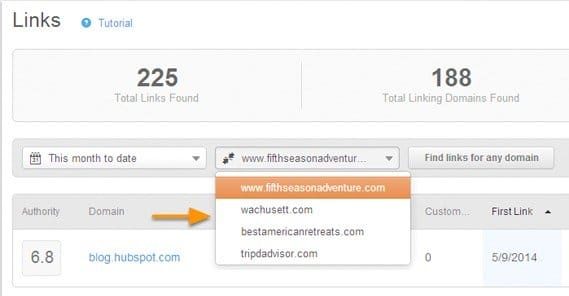How to Use Hubspot for Backlink Building

Proper link building has become something of a lost art these days. The people who used to specialize in it used techniques firmly branded as black hat today. The people who do it today tend to just say that good content brings its own links. Good content marketing, they say, is its own reward.
Link building manually still exists today, it’s just difficult. You need to do it right, lest you fall victim to the penalties that come from spam links. Hubspot is a great tool for this purpose, though a lot of what you’ll be doing is simply using it for reporting.
Methods for Building Links
Before we get into how to use HubSpot for link reporting, let’s talk about how to build links these days. Once you know the process, you’ll be able to recognize how valuable a tool is in the process.
Process: Blog posting. By maintaining a steady blog, you’re already building links. For one thing, each time a reader with a blog of their own comes across a post of yours they like, they may link to it. No effort on your side necessary.
In addition, you can consider every blog post you make to be an opportunity for a link. The more targets you have for links, the more links you’ll be able to get. At that point, it’s just a matter of numbers.
When you have a successful blog, you can leverage that success into guest posting opportunities. Post on other sites to build brand and name recognition, as well as links back to your site.
A note, here. Google has been working on a method for crediting sites with links even when no specific link exists. Essentially, they take a brand mention and consider it an implied link. Even if a guest post denies you an explicit link, an implied link may be quite valuable in the future.
Process: Producing off-site content. Guest posting can also fall under this heading, but it’s enough like blogging that I can consider it part of either. When producing content for other sites, you can use other techniques as well. For example, find books written by industry veterans and write reviews of them. You can post them in relevant locations other than your own site for added link benefit.
You can also create multimedia of various forms, like webinars to archive on YouTube or slideshows to post on Slideshare. There are a bunch of different sites that give you opportunities to post content that then links back to your site.
Process: Social interactions. Here I lump together a few forms of engaging people and getting them to link back to you.
One option is a site like HARO, where you set up interviews between yourself and a reporter. A reporter working on a story in your industry will interview you, and you gain reputation as an expert and a link to your site.
If you write an ebook, you can send out promotional copies for reviews. The bloggers who review the book will link back to your site, not to mention give your book some publicity.
Any way you can network or partner with a blogger is a good way you can get their attention. Attention earns you links, whether they come immediately or they’re an artifact of prolonged interaction.
Using the Hubspot Links Tool
The first thing you need to do is, well, have Hubspot installed. If you don’t have it, just head over to their site and pick up a copy.
Once you have everything set up, go to the reports tab and click Reports Home. On the right side of the screen will be a menu; click links.
At the top of this section, after a scan, Hubspot will give you three numbers. The first is the total number of links it sees. This isn’t perfect; the data is on a delay and it doesn’t cover every possible link, particularly if your site is old enough to have accumulated a large number of links. The second number is the number of linking domains. If one site links to you five times, the first number is increased by five, while the second is increased by one.
The third number is the number of sites linking to you that Hubspot considers authority sites. This can vary from industry to industry, how tough they are to get as well as what sites count as authorities.
Below this readout, you’ll see a chart. It will give you a list of links, with a date-based filter and a domain filter. Each link it finds will have an authority ranking, based on a 0-10 scale. It will list the domain and the number of links they have given you. It will list, on top of tat, the number of visits from that link, the number of first time customers to appear, the number of returning customers, an the dates of the creation of the link as well as the last time it was used.
By clicking on an individual domain name, you can see more information about that domain and the links associated with it. If a site links to yours five times, this readout will show five links under that domain.
Note: if you have the domains for your competitors handy, you can look up a similar link report for them as well. This gives you a picture of where you stand compared to your competition.
By looking through the list of domains linking to you and your competitors, you begin to see how spotty coverage actually is. You can, for example, use the links built by your competition to give you ideas of sites to pursue for links. Make a list of potential targets and put the ideas above to use.
 ContentPowered.com
ContentPowered.com





